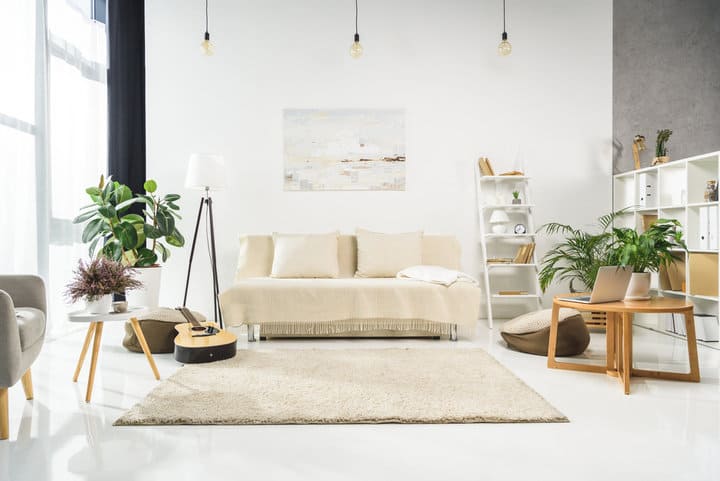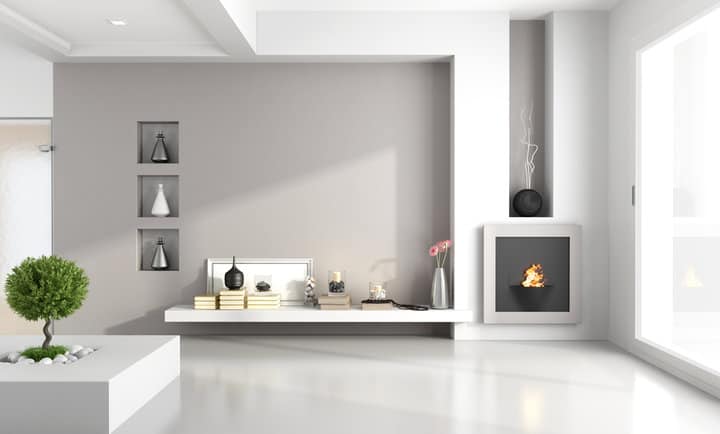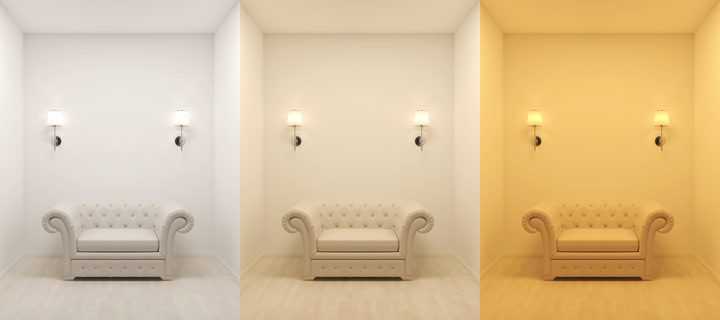When buying new light bulbs for your home, you might see them advertised with a description of the type of white they are.
While “soft white” is quite self-explanatory, the other standard options are “bright white” and “daylight,” – which can be a little confusing.
Because in the real world, daylight is quite a bright white light, isn’t it? So what’s the difference between the two?
Daylight is a brighter, more blue-white color than bright white. A bright white bulb is considered to be more of a pure white. In contrast, a daylight bulb mirrors actual daylight by being further up the Kelvin temperature scale.
To help explain the differences in a little more detail, let’s take a look at:
- The differences between the two types of bulb
- Which one is considered “brighter”
- Other types of white bulb you can buy
- Which bulb is closest to natural light
Difference Between Bright White And Daylight Bulbs

When we’re talking about different colors of the white light bulb, what we’re referring to is the color temperature, which is measured in Kelvins (K).
The Kelvin scale generally runs from around 1000K to 10000K and is a measurement of the color of the light on a white scale.
The lowest numbers are closer to orange, and the highest is closer to blue, but they are still variants of white.
So bright white and daylight bulbs are just two different bulbs on this scale.
A bright white bulb typically has a Kelvin rating of around 3000K, while a Daylight bulb will be closer to 5000K.
But the terms “bright white” and “daylight” aren’t scientific – only the Kelvin rating is.
So a manufacturer might call a 3500K bulb “bright white” and 4500K “daylight.”
This is why it’s a good idea to understand the scale of Kelvins when it comes to whites so that you can find the correct bulb.
3000K is considered to be almost pure white. It’s the best balance between orange and blue, generating a light that looks very white.
Anything up to around 3,500K will likely be similar.
Once you get to 4000K, you’ll notice the blue hint to the white light, although it still looks natural until you get to around 5500K, which is when it becomes a really “cool” blue-white light.
Anything around the 5000K mark will look like natural light.
Which Is Brighter Daylight Or Bright White?

This is where it gets a bit interesting because you can look at the brightness in two ways.
Purely from a color temperature perspective, a daylight bulb will appear brighter than a bright white one – just because it resembles that daylight hue more closely.
Bright white is still a bright and crisp light, though, and the ‘brightness’ difference from a color perspective is marginal.
However, when we talk about brightness with light bulbs, the actual luminosity matters much more than color temperature.
Lumens are a direct measurement of how bright the bulb is.
So a 40-watt equivalent LED bulb measured for daylight may have a ‘brighter-appearing’ color. Still, it will be much less powerful than a 100-watt equivalent bright white bulb.
From a scientific perspective, the brighter bulb will provide more lumens. The daylight bulb will appear brighter if the bulbs are of equal lumens.
What Are Other Types Of Colour Temperature Bulbs?

As I mentioned earlier, there are a few other types of light bulbs beyond just bright white and daylight, including:
- Soft white, or warm white – a more gentle light shade that resembles the orange glow of a setting sun
- Daylight Deluxe (Amazon) – a light even further up the Kelvin scale, around the 6500K mark.
- Ecosmart bulbs (Amazon) – some of these let you change the color temperature between 2700K and 5000K just by flipping a switch on the bulb.
- Smart bulbs – some brands have a ‘white ambience’ (Amazon) bulb which lets you determine the color of white you want.
Here’s a summarised look at the different bulbs you can buy and what you would use them for:
| Bulb Type | Kelvins | Typical Ambience | Best Rooms |
|---|---|---|---|
| Soft/warm white | 2700K | Warm, cozy and relaxing | Living rooms and bedrooms (in lamps) |
| Bright white | 3000K – 3500K | Welcoming, bright and alert | Bathrooms, hallways, and bedrooms (main light, for waking up) |
| Daylight | 5000K | Energetic, focussed | Offices, garages, kitchen (over worktops) |
| Daylight Deluxe | 6500K | Extremely energetic and bright | Basement, garages, workshops |
| Smart | 2700K – 6500K | Up to you | Any |
A quick note on smart bulbs – there are usually three types. These are white, white ambiance, and color.
It’s important to get the white ambiance type of smart bulb if you want the flexibility to change the shade of white.
A ‘white’ smart bulb will have a default Kelvin temperature, and the only smart controls are for turning it on and off and dimming it.
A color RGB bulb can create up to 16 million different colors. Still, most use a blend of red, green, and blue diodes without a white one, so while they can achieve a variance of white, they cannot match the scale of whites that a white ambiance bulb can.
What Colour Is Closest To Natural Light?

This question is tricky to answer in a straightforward way because natural light has different color temperatures depending on the time of day and the weather.
The simplest answer, when comparing the midday sun on a clear day, the nearest bulb to natural light is the daylight bulb at around 5000K.
A soft/warm white will recreate that sunset/sunrise color temperature, which makes it great for relaxing in the evening.
Daylight Deluxe bulbs are similar to the color on a warm, cloudy day, where the cloud cover removes some of the orange from the sunlight.
Final Words
There’s no simple ‘white’ light bulb when it comes to LEDs, so you must be careful when shopping for replacement bulbs.
You probably don’t want a daylight deluxe bulb in that table lamp next to your bed for reading at night.
But if you’re unsure whether you’d prefer a bright white or a daylight bulb, consider the extra expense of an ambiance smart bulb that lets you change it on a whim.
Yes, they cost more, but the flexibility to set the mood is often worth it.
Do you have a preferred color temperature of the bulb, or do you carefully plan which room will have which color?
Or have you already made the jump to smart bulbs?
Looking for an LED bulb but not sure what type you need?
Check out my free bulb picker and select the right bulb within few clicks.

